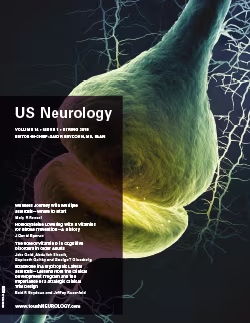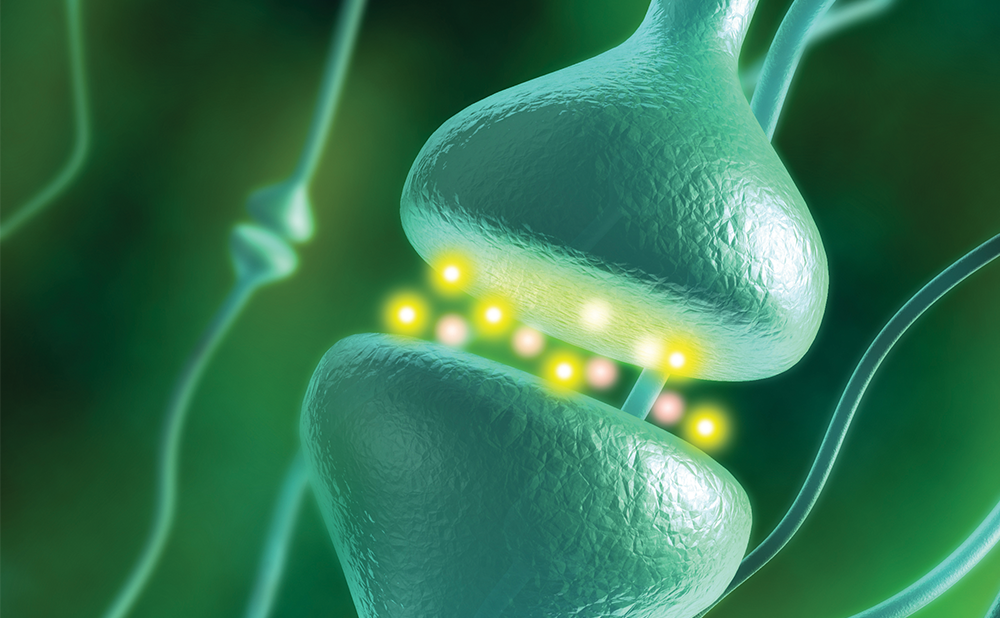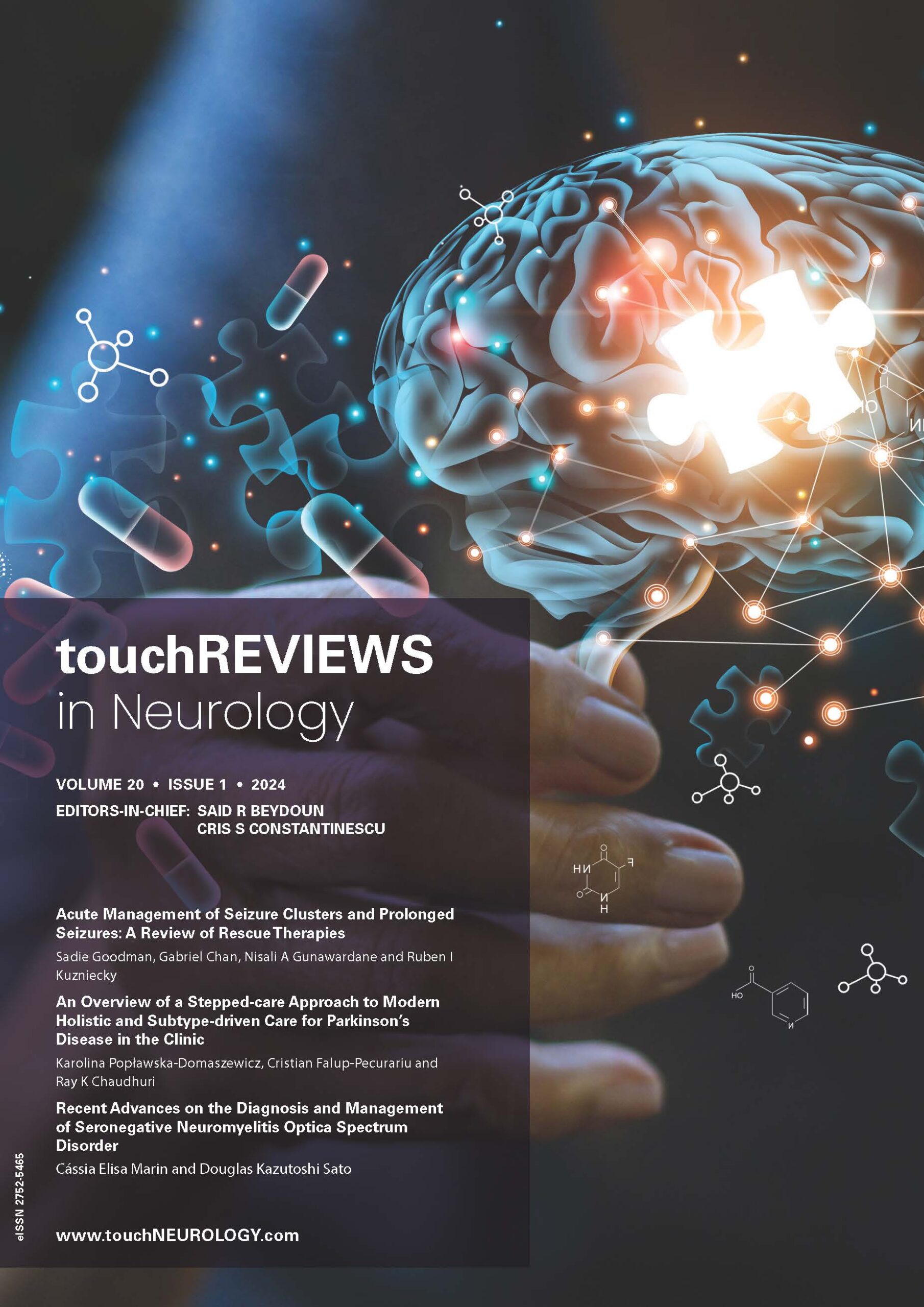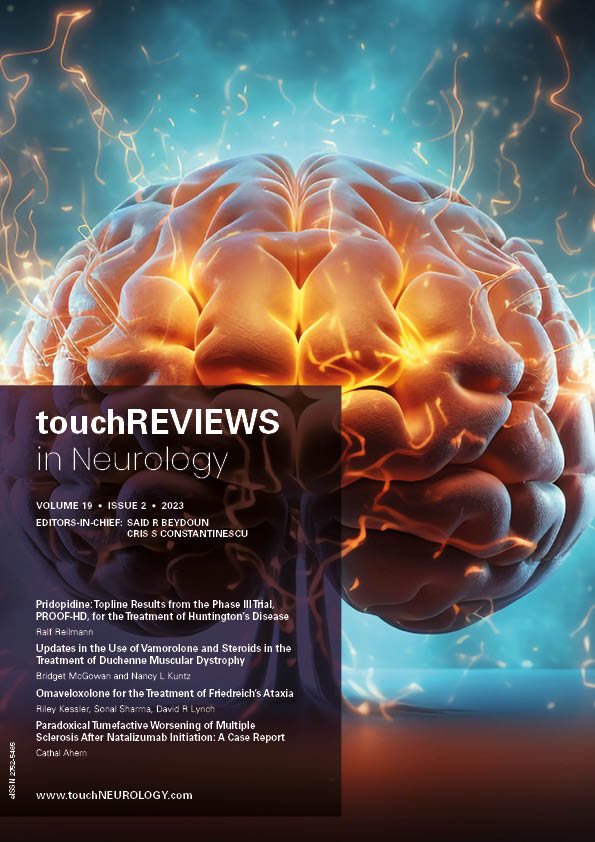US NEUROLOGY – VOLUME 14 ISSUE 1 – SPRING 2018
Welcome to the spring edition of US Neurology!
This edition opens with a selection of expert interviews covering the key themes of last year’s annual Alzheimer’s Association International Conference (AAIC), as well as topical aspects of epilepsy including presentations at the American Epilepsy Society (AES) annual meeting, which took place in December.
Nutrition and lifestyle are underlying topics across several of the articles, touching on multiple sclerosis, stroke and cognitive disorders. Daniel Hanley, et al. discuss the need to intensify therapy for intracerebral hemorrhage, and our Editor-in-Chief, Said Beydoun, and Jeffrey Rosenfeld provide a timely review of the clinical development of edaravone, the first therapy to receive FDA approval for amyotrophic lateral sclerosis in 22 years.
We hope you enjoy this edition, which will be distributed at the upcoming AAN meeting in Los Angeles – stop by the European Academy of Neurology (EAN), Movement Disorder Society (MDS) or Multiple Sclerosis Foundation (MSF) stands to pick up your free copy.
We are now accepting submission to our Fall edition, and welcome you to submit you manuscript here.
Enjoy!
Welcome to the spring edition of US Neurology, which features a range of articles that have been chosen for their evaluation of current practices and research that directly affect neurologists and other practitioners involved in the care of patients with neurological illness. Our expert interviews have become a popular feature of the journal, and this […]
Expert Interviews
Q. What proportion of dementia cases could be preventable through lifestyle modification? In a report presented at AAIC 2017, The Lancet International Commission on Dementia Prevention, Intervention and Care reported that more than one third (roughly 35%) of global dementia cases may be preventable through addressing lifestyle factors that impact an individual’s risk.1 These potentially […]
Q. Why is the diagnosis of Alzheimer’s disease (AD) so challenging? It is relatively easy to make a diagnosis of dementia, but to determine AD at an early stage is still a clinical challenge. AD is considered as a patho-clinical continuum where neuropathological changes start to accumulate in the brain probably 10–15 years before the […]
Q. A number of drugs in development for Alzheimer’s disease (AD) have failed phase III clinical trials. Why do you think this is? There have been a number of high-profile phase III clinical trial failures recently, raising the question why are these efforts not showing more promise? So far, there does not seem to be […]
Q. What are the major limitations of the current standard of care in patients with Alzheimer’s disease and related dementias (ADRD)? The shortage of behavioral neurologists and other cognitive specialists has impacted how patients and families access cognitive care for ADRD. According to American Academy of Neurology (AAN) membership data, in the US it is […]
Q. How is soluble amyloid-beta cleared from the brain in healthy individuals? Amyloid-beta (Aβ) is produced in all brains, as it is key to the maintenance of brain health. Normally Aβ is broken down by enzymes2 and eliminated across the walls of the blood vessels into the blood,3 or is removed by intramural periarterial drainage […]
A new Centers for Disease Control and Prevention (CDC) study published in August 2017 reported national and state estimates of the numbers of adults and children with active epilepsy in the US in 2015.1 In an expert interview, Dr. Privitera, past president of the American Epilepsy Society (AES, 2016), discusses the implications of the latest […]
Q. How prevalent is obstructive sleep apnea (OSA) in people with epilepsy? OSA is a potentially serious disorder that occurs when a person’s breathing is interrupted during sleep. It is associated with a number of health problems including hypertension, stroke, arrhythmias, heart failure, diabetes, obesity and sudden death. In addition, untreated OSA is commonly associated […]
Q. What was previously known about brainstem network validation in focal epilepsy and sudden unexplained death in epilepsy (SUDEP)? The first line of evidence for an involvement of the brainstem had come from those rare cases in whom SUDEP was witnessed.2 The symptoms observed in those patients indicated a breakdown of central autonomic control. The […]
Editorials
“Insanity is doing the same thing over and over again and expecting different results.” Though the quote appears to be misattributed to Albert Einstein, its prudence is undeniable.1 CLEAR III (NCT00784134) provides ample evidence that this axiom has useful wisdom and perhaps even provides direction for physicians wanting to improve the outcomes of hemorrhagic stroke […]
Multiple sclerosis (MS) is a demyelinating and neurodegenerative disorder of the central nervous system (CNS), for which disease-modifying therapy is a mainstay treatment approach. In addition to conventional therapy, there is growing evidence and interest in the effects of certain comorbidities and the role of lifestyle factors on MS, such as vitamin D deficiency, tobacco […]
Despite substantial evidence to the contrary, there is still a widespread belief that B vitamins to lower plasma total homocysteine (tHcy) do not prevent stroke. This belief is based on the failure of early clinical trials to show a reduction of stroke with B vitamin therapy. However, it is increasingly clear that harm from cyanocobalamin […]
Reviews
Recent research suggests that vitamin D plays an important role in preventing and/or decreasing the risk of a variety of neurodegenerative disorders in addition to its well-established role in bone and calcium metabolism. It is estimated that 40–80% of geriatric patients have low levels of serum vitamin D.1In this article we review the latest research […]
Motor neuron disease (MND) encompasses a range of disorders that differentially affect the upper and lower motor neurons. Amyotrophic lateral sclerosis (ALS) is the most common form of MND. In ALS, both upper and lower motor neurons are affected.1 Amyotrophic lateral sclerosis is classified as a spectrum disorder since there is great variability in the […]

Trending Topic
Chronic inflammatory demyelinating polyradiculoneuropathy (CIDP) is a rare, autoimmune neurological disorder in which peripheral nerve demyelination typically results in weakness, impaired limb sensation, fatigue and pain.1–4 CIDP may adversely affect activities of daily living, with a substantial impact on functional ability and psychological well-being.2–6 Primary treatment goals are reducing symptoms, improving functional status and maintaining long-term remission.7 The […]
Journal Archive
touchREVIEWS in Neurology is a peer-reviewed, free-to-access, bi-annual neurology journal comprising review articles, case reports, practice guides, theoretical discussions, and original research. It features balanced and comprehensive articles written by leading authorities, addressing the most important and salient developments in the field of neurology.
Latest articles videos and clinical updates - straight to your inbox
Log into your Touch Account
Earn and track your CME credits on the go, save articles for later, and follow the latest congress coverage.
Register now for FREE Access
Register for free to hear about the latest expert-led education, peer-reviewed articles, conference highlights, and innovative CME activities.
Sign up with an Email
Or use a Social Account.
This Functionality is for
Members Only
Explore the latest in medical education and stay current in your field. Create a free account to track your learning.



















